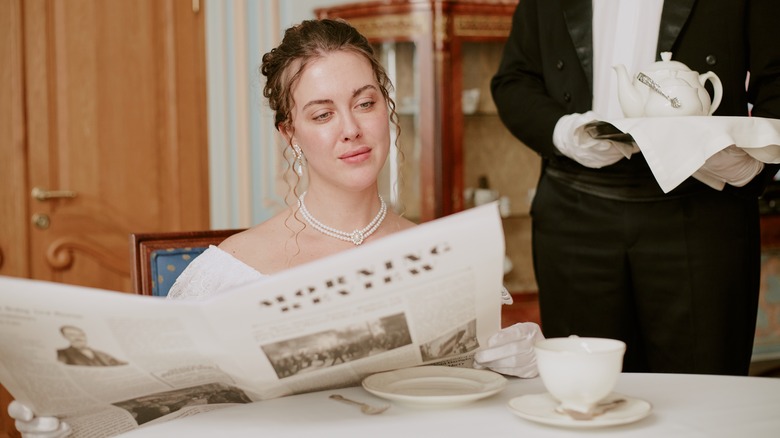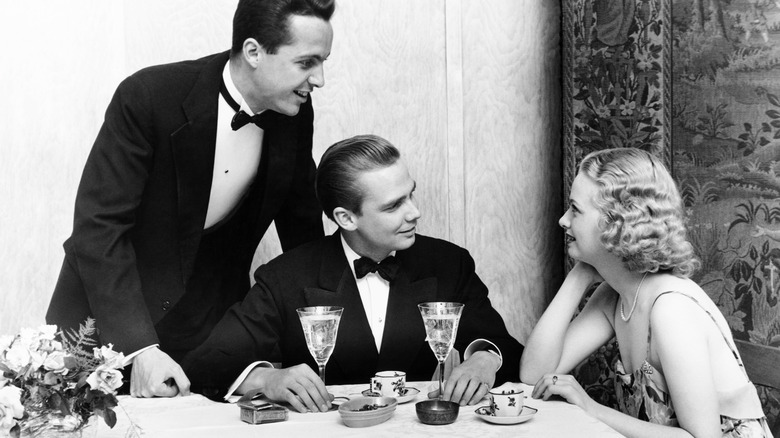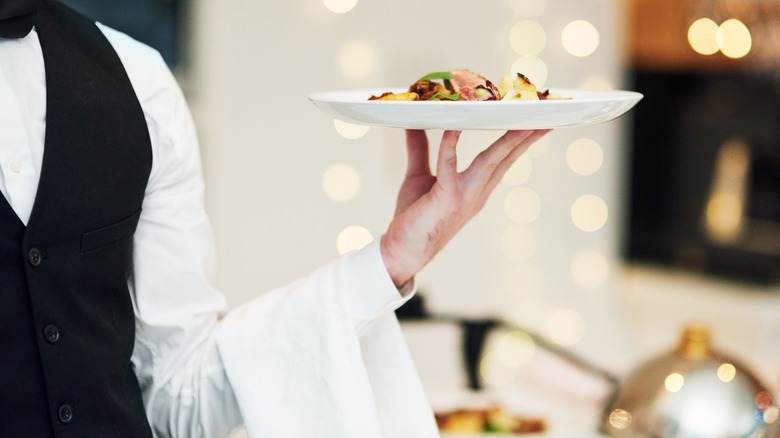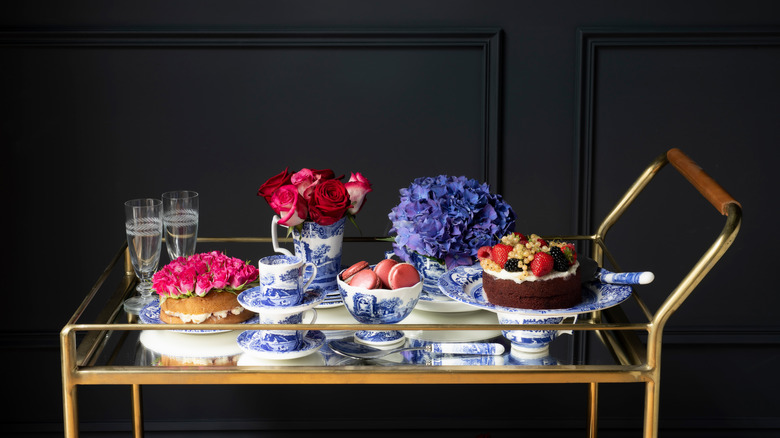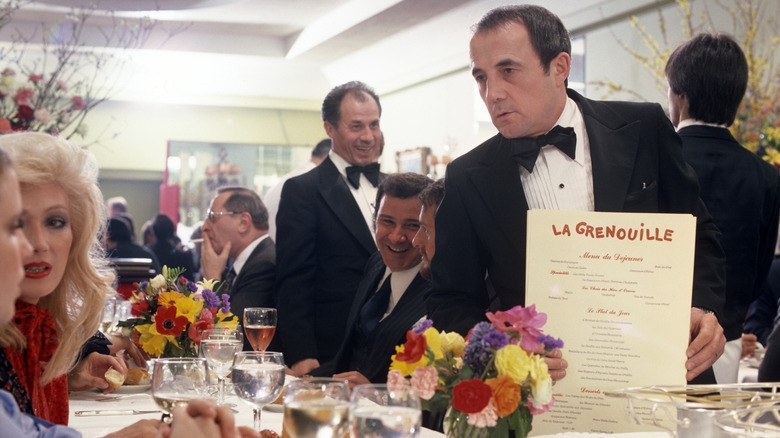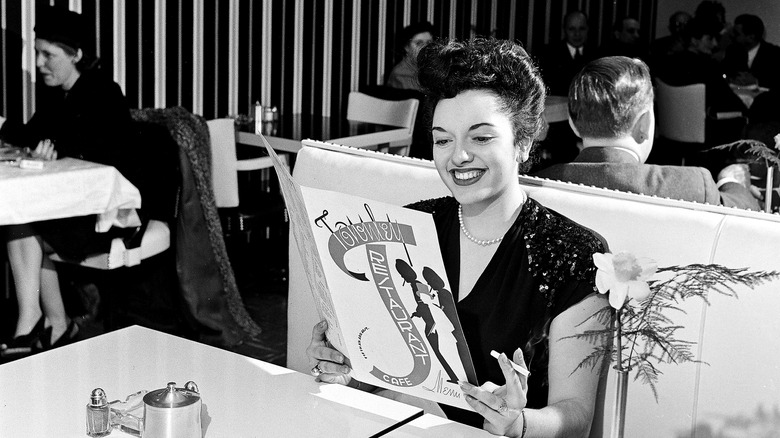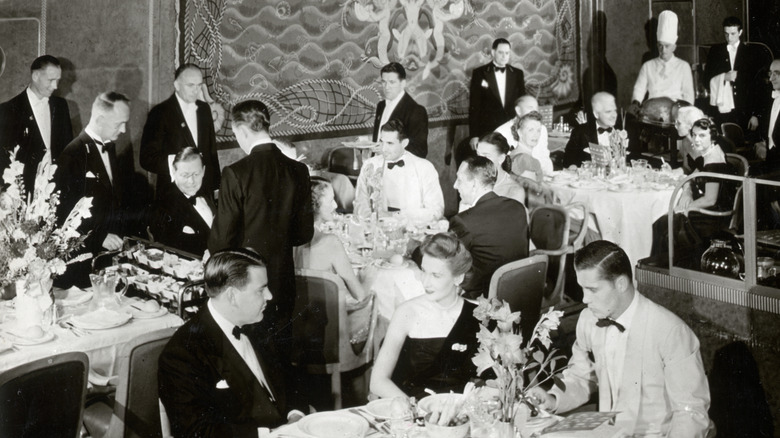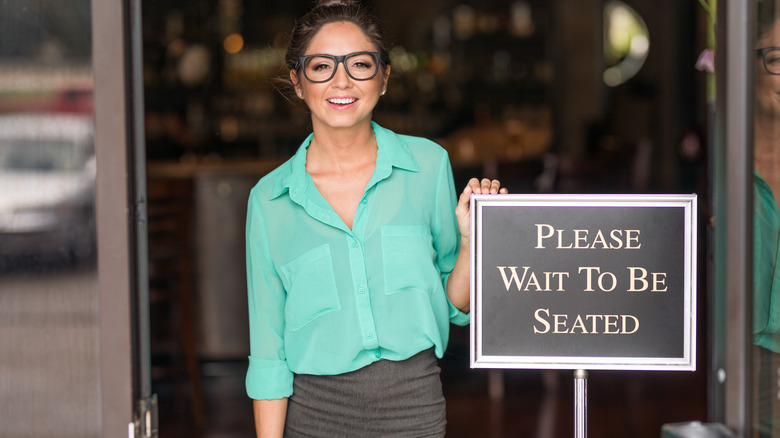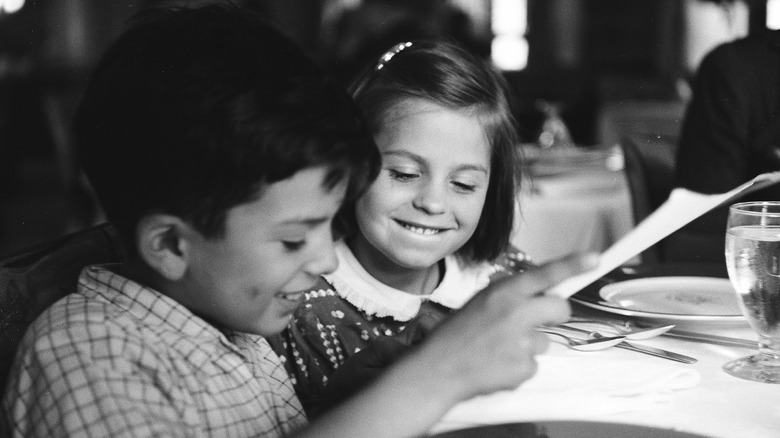Once Common Restaurant Behaviors That Have Faded Away
There was a time when dining out meant more than just eating a meal. There was a ritual encompassing the whole experience, from the encounter with the maître d' to the meals designed to unfold over many courses. A night out — be it with friends, family, or a lover — was an occasion. The food mattered, of course, but so did the clothes you wore, the anticipation of enjoyment, and the sense that you were in for a special time.
But things have changed. Life is a lot faster nowadays, costs have gone up, and the convenience of the digital age has made restaurant culture a lot quicker, casual, and transactional. The personal touch seems to be missing. Reservations are made online, phones are whipped out to photograph every dish, and the menus lack the grandeur of old, having been designed for flexibility and, in many cases, digitally.
Today, some of the rituals of eating out seem very outdated, with the new norms prioritizing efficiency rather than grandeur. And yet, the nostalgia lingers. A few of these practices are being revived, albeit in a more modern format. Trolleys, tasting menus, and theatrical services are all suggestive of a need to slow down and experience the sensory wonder of dining out. Looking back at some of the restaurant traditions is not just about yearning for the past, but also about how our dining habits continue to evolve.
Smoking inside restaurants and smoking sections
It may be impossible to even imagine it now, but a few decades ago, you would have walked into a restaurant and the first question the host would ask was "smoking or non-smoking?" Yes, bars, cafes, restaurants, and even fast food joints were often filled with cigarette smoke, and it was considered the norm. And we mean it when we say filled. As one Reddit user pointed out, tongue firmly in cheek, the choice was in reality, "Would you like to sit in the middle of the smoke or to the side of the smoke?"
In the early and mid-20th century, cigarettes were not only more commonplace, but they were also socially accepted and encouraged. Advertising campaigns proudly proclaimed them as digestive aids, and doctors even endorsed the habit. However, as time went by, studies began to increasingly link tobacco usage to lung cancer and cardiovascular disease.
By the 1990s, smoke-free dining rooms were becoming increasingly popular. The first statewide indoor smoking ban was introduced in Delaware in 2002. As of July 2025, the American Nonsmokers' Rights Foundation reports that 1,217 municipalities and 28 states prohibit all smoking in non-hospitality workplaces, restaurants, and bars. Unsurprisingly, these bans were not always welcome. Some restaurant owners feared a loss of business, while others believed the bans had gone too far. Several research papers proved otherwise, and the disappearance of smoking from dining rooms continues to improve not only public health but also the sensory experience of eating out.
Formal dress codes
Imagine if every time you went to a restaurant, you were expected to dress up. And by dress up, we mean the whole caboodle — jackets, ties, and dress shoes for men, and dresses, hats, and gloves for women. In many restaurants, particularly higher-end restaurants in the early to mid-20th century, there was a time when dining in your Sunday best was standard. For example, in the early 1900s, the Fred Harvey Company, which operated a number of eateries across the West, enforced a jacket rule in its dining rooms.
Things changed drastically after World War II. As suburban families struggled with childcare and free time, they preferred to eat out at diners and drive-ins rather than formal restaurants. Convenience was the name of the game, and chains began luring customers with family discounts and cheap steak dinners. By the late 20th century, business casual attire began to creep into the restaurant scene as lines between formality and workwear began to blur.
Today, the performative aspect of dining out no longer lies in the clothes and fashion of the customer. While dress codes do still exist at some eateries, the focus has also squarely shifted to the visual aesthetic of the restaurant itself. Diners may show up in sneakers and tracksuits, but social media often dictates the style code of a restaurant's interior. The ritual of formal dress has given way to a new kind of theater, and this time it's being staged as much for the camera as for the palate.
Multi-course meals were standard fare
Not too long ago, eating out was quite the production. Multi-course meals were the norm, and once seated, the experience from start to finish could stretch out for hours. The prix-fixe menu, first popularized in France by Auguste Escoffier in the late 19th century, removed any confusion about what to order. There was no stress about choosing a dish or catering to different tastes. Instead, a preordained variety of dishes emerged from a kitchen, all the while maintaining an air of ceremony and exclusivity.
This type of formal dining continued for the better part of the 20th century, particularly in fine dining restaurants, and remains closely associated with notions of status and elegance. While prix-fixe dining has not entirely disappeared (you can still find it on some Michelin-starred and chef's tasting menus), the preference today leans toward à la carte dining and more casual, flexible options. Diners often prefer their meals speedy and varied. This could mean anything from sharing platters to enjoying tapas with a glass of wine.
The maximalist ethos of dining has softened, too. Multi-course, heavy menus have made way for innovative and experimental restaurants open to all sorts of cuisines and diets. From mainstream vegan restaurants to creative pop-ups that are changing how we eat, once rigid dining habits have lost their popularity. These shifts confirm how eating out has evolved from tradition and ritual to curiosity and flexibility — and, ultimately, the changing values of modern diners.
Trolley or table-side service was the norm
At a certain point in time, restaurant service at more upscale venues used to be full of pomp and grandeur, when the service also involved a fair share of theatrical extravagance. For example, trolley service and tableside presentation were a mark of an upscale restaurant experience. For those unfamiliar with the term, it refers to a gleaming trolley or cart, which was wheeled around a restaurant, offering diners an extravagant array of delicacies. Servers would carve a roast or flambée crêpes, creating a visual spectacle for diners.
These performances transformed even the simplest meal into a special event. The waitstaff were highly trained individuals ready to show off their skills with pride. Whether it's due to inflation, rising labor costs, or tighter margins, these elaborate experiences have become less common as more eateries prioritize delivering faster service with fewer staff.
That said, in recent years, there has been a rise in the popularity of tableside dining. Some restaurants have reintroduced trolley service to offer their patrons a more interactive and immersive dining experience. Could this be a deliberate effort to reconnect with the earlier flamboyance of dining out? Maybe, but it could also be an indication that evolving dining habits still yearn for a deeper connection between people and food, and this is also forcing a revival of the old ways of hospitality.
Long dining times and no table turnover pressure
A few decades ago, sitting down for a meal at a restaurant often implied settling in for a couple of hours. Long, unhurried feasts forced one to leave the clock at the door, and guests were expected to linger over each course. But by the late 20th century, there was a significant increase in fast and casual dining establishments. Concepts such as salad bars, coffee shops, and quick-service fast food restaurants became a reflection of a culture that prioritized speed and efficiency over leisure and indulgence.
In the U.S., the fast casual dining sector is projected to grow at nearly 13.7% per year (via Technavio). Table turnover and faster service models have become the norm, and the long, lingering dinner service is increasingly a luxury relegated to fine dining restaurants. Today, we can see a balance between streamlined menus and service, along with subtle cues that encourage diners to move along when the meal is done. Dining out may have become more accessible and diverse, but it has also turned into something less ceremonial and worlds apart from the indulgent rituals of the past.
Ladies' menus without prices
The social rituals surrounding the paying of the bill had their own set of rigid rules. Who, how, and when the bill was paid was an important part of the dining experience. Mid-20th-century restaurants followed several rules of etiquette. The simple act of paying the bill was a carefully choreographed affair. The check would be handed over discreetly to the male head of the table. Splitting the bill was not the norm and was usually frowned upon. In fact, some high-end restaurants had versions of the menu without prices that were handed to the ladies in each dining party. This was to ensure they didn't have to worry about costs — a reflection of the times, where gender expectations and decorum were firmly ingrained.
As the pace of modern life changed, so too did dining etiquette, which meant that many of these traditions slowly faded away. Today, it's more common to split checks and make mobile payments. Ladies' menus have disappeared, with diners today prioritizing transparency, speed, and digital convenience rather than complex rules of etiquette.
Dining out was a special occasion
Dining out today has become a routine, almost daily activity for some, rather than the rare treat it once used to be. Back in the day, restaurants were reserved for celebrations or meaningful occasions. The implication was that eating out was a special event, and restaurants responded by playing up the experience and ensuring a sophisticated ambiance, formal service, and meticulous attention to detail.
Over the years, with an increasing number of women entering the workforce, home-cooked meals became too much of a struggle, and families started eating out more often. Casual dining became popular, and post-pandemic, with the advent of home delivery, consumer preferences changed even more. There has also been a shift towards casual fine dining, where high-quality cuisine is offered in a more relaxed ambiance. This has made gourmet dining more accessible and appealing to many.
While eating at restaurants has generally become a more casual phenomenon, it's also become easier than ever to bring the convenience of dining out to your own home, thanks to the rise of delivery apps. According to a report by Revenue Management Solutions, more than half of diners have cut down on table service restaurant visits since the COVID-19 pandemic, and many still prefer the convenience of ordering from home or visiting a quick-service restaurant. Unsurprisingly, not all businesses are happy with the popularity of third-party delivery services.
The maître d' as a gatekeeper
Securing a table for a night out once relied on knowing the right person or using your charm to snag the best seat in the house. The maître d' was the one with all the power, and he controlled the air of exclusivity that some establishments sought to maintain. Who you knew and where you went was as much part of the dining ritual as the meal itself.
In the 2000s, the entire system was turned on its head thanks to the introduction of the online reservation system. The now-closed Momofuku Ko set the stage for this new era of eating out. As you can imagine, this process was met with controversy and complaints, but it also marked a turning point in the democratization of the dining ritual. Customers no longer had to turn to connections but rather rely on their digital savvy to secure the tables they wanted.
As reservation platforms and apps become more popular, tables become more accessible (even if they're still difficult to snag). Today, the hostess stand no longer wields the same power. While apps have promised increased efficiency, optimal table management, and real-time updates, they've also introduced new obstacles, such as bots that swoop in to hoard and resell in-demand reservations.
Physical menus over apps
One could argue that chalkboard art and heavy leather-bound menus still exist today. Many trendy cafés and fine-dining restaurants continue to cling to these options, although whether that's out of nostalgia or ceremony is unclear. But these are now the exceptions to the relative norm of digital menus and QR codes taking over the food and beverage industry.
Menus printed on thick card, adorned with elegant typography and even illustrations have almost disappeared. As color photography became more common, diners resorted to vivid previews of what they could expect. In the late 20th century, menus entered the digital age. Pizza Hut pioneered the concept of ordering food online in 1994. Suddenly, diners could browse menus at home, compare options, and plan their meals in advance. Restaurants gained the ability to update offerings in real time, cutting costs and keeping customers engaged.
This adaptation of technology soon crept onto the table as well with touchscreen tablet menus. These allow diners to order and pay for their meal without leaving their seat (as well as reducing the need for waitstaff). COVID-19 fast-tracked the use of QR code menus that offered a more hygienic alternative to physical menus, while several apps have launched to help restaurants refresh menus instantly. The convenience and efficiency of digital menus are hard to argue with, and the balance is tilting steadily in their favor. It's not hard to imagine a near future where the tactile ritual of holding a menu becomes a rare indulgence rather than the rule.
Phone-free dining
At the risk of sounding like a whiny Gen X-er, there was a time when dining out meant that you were fully present. Time at a restaurant was not spent scrolling on your phone or carefully angling your salad for the best picture. Restaurants expected patrons to engage with one another and savor the meal. This allowed diners to focus on flavors, textures, and conversation (or at least one hoped). Chefs and restaurants focused their attention on service and taste rather than Instagrammable moments and social media spectacle.
As smartphones entered the picture, the landscape of dining out has changed dramatically. Thanks to the rise of Instagram and TikTok, documenting meals is, to many, just as important as actually eating. Vibrant colors, unusual plating, and creative touches that are guaranteed to pop on a social media feed are often given priority when designing a menu. Customers, in turn, are compelled to capture every moment before taking their first bite. The phenomenon of eating with your phone first has reshaped the experience, with some arguing that presentation now competes with flavor in importance.
Basic or unhealthy children's meal choices
While it may surprise some, children's meals in restaurants have been around for a long time, even if they have changed dramatically along the way. In the early 20th century, these meals were simple, modest affairs. Among the treats on offer were dishes like creamed chicken, soup, or toast. Dining out was more of a rarity, and dining with children was even more so, which meant that restaurants often treated kids' meals as an afterthought and paid little attention to creativity and flavor.
By mid-century, that began to shift. As more women began to take up work and household income increased accordingly, more restaurants began to tap into the family market. Kids' meals were served along with playful extras such as crayons and puzzles, designed to keep children occupied while parents dined in peace. Then came the 1970s and '80s, when fast food chains made kids' menus non-negotiable with perennial favorites such as chicken nuggets, mac and cheese, fries, and milkshakes.
There is another transformation underway today. As more people adopt healthier lifestyles and alternative diets, restaurants have had to keep up with the times and rethink the definition of a kids' meal. While many places still offer crowd favorites like fries and soda, also on the menu are items like edamame, sweet potatoes, and mini chicken roasts. Even the simple children's menu is a reflection of how tastes have evolved as young diners continue to feel included by the range of choices on offer.
